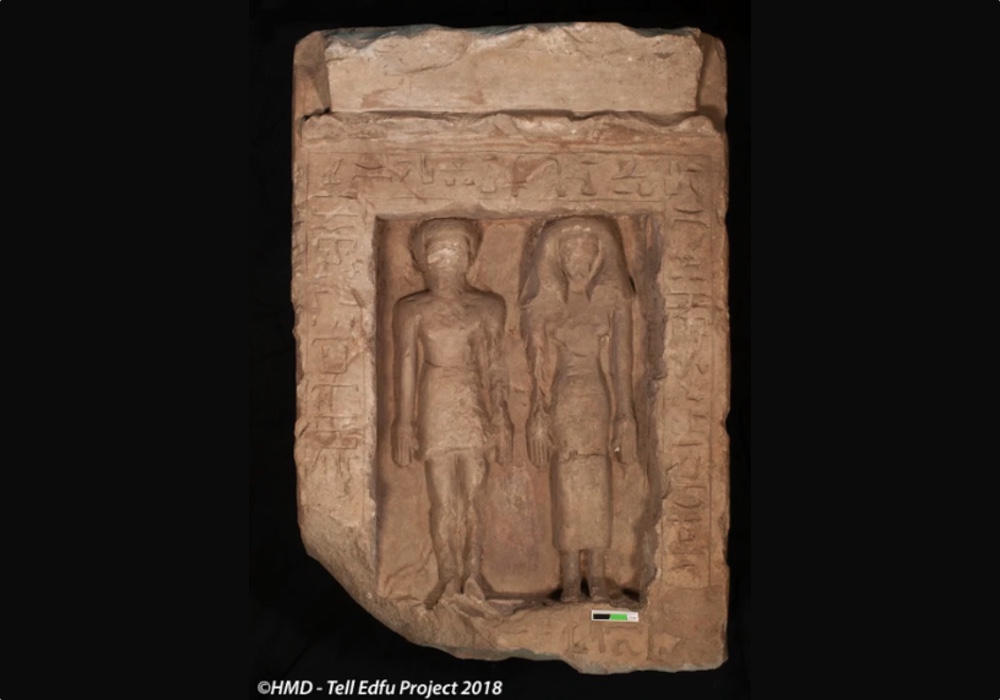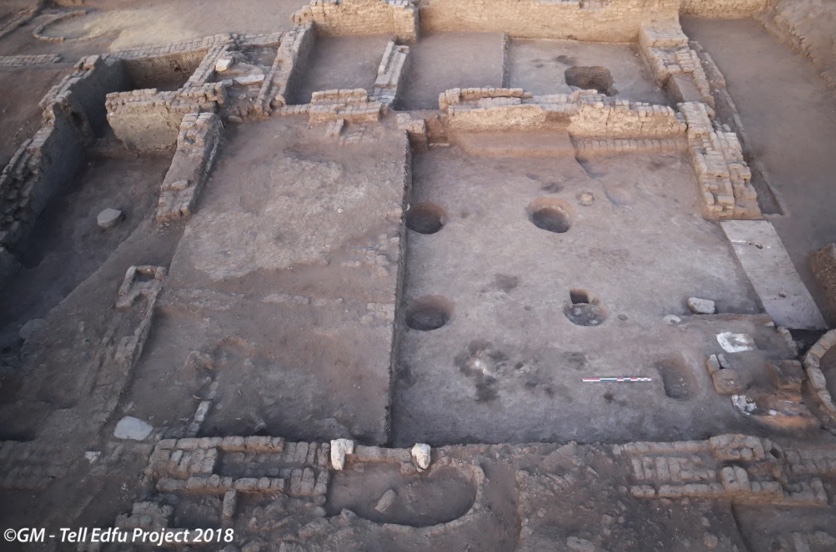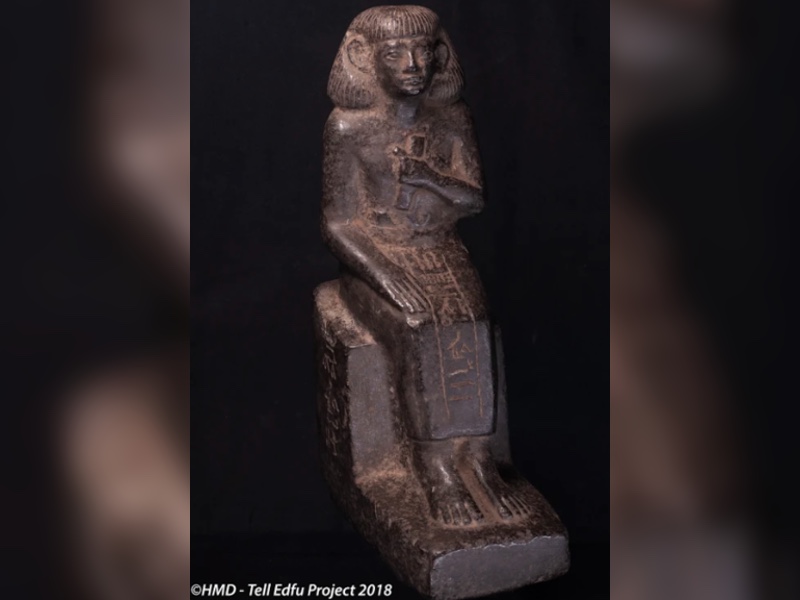Damage to Ancient Carving of Egyptian Couple Was Meant to Hurt Them in the Afterlife

An intentionally damaged limestone carving found within a 3,500-year-old shrine at Tell Edfu, in southern Egypt, shows what appears to be an ancient couple who someone tried to vanquish in the afterlife.
The carving depicts a man and woman standing beside each other, with hieroglyphic inscriptions giving their names and occupations. "The faces of the couple were [damaged]," and hieroglyphic writing on the carving had been "scratched out," Nadine Moeller, the director of the Tell Edfu Project, told Live Science. "Erasing a private person's name in ancient Egypt is usually a sign of someone wanting to erase the memory of this person and therefore obliterate their existence in the afterlife," explained Moeller, who is also a professor at the University of Chicago's Oriental Institute.
"For the ancient Egyptians, being remembered after death was very important, so they would receive offerings in the netherworld. By erasing someone's name, you are also taking away their identity and the good deeds they did during their lifetimes for which they will be remembered after death," Moeller added. [The 25 Most Mysterious Archaeological Finds on Earth]

The scratched-out hieroglyphs are difficult to read, and researchers are in the process of trying to reconstruct and decipher the symbols. So far, they can tell that the man "held the title of 'major' and the women held the honorific title 'noble woman,'" Moeller said, noting that the couple "belonged to [the] administrative elite of the town of Edfu."
The identity and motive of the person who tried to wipe out their existence is not known. It's also not clear when, exactly, in ancient times the carving was intentionally damaged.
Ancestor shrine

The shrine in which the carving was found is located within a villa that is about 440 square yards (3,960 square feet) in size and was constructed sometime between 1500 B.C. and 1450 B.C., researchers said in a statement released by the University of Chicago. The shrine appears to have been used to worship the ancestors of the people who lived in the villa, researchers found.
Several other artifacts were found in the shrine, including a statuette carved in black diorite stone, which depicts a scribe clutching a papyrus roll. Hieroglyphic inscriptions on the statuette indicate that the scribe's name was "Juf," and he may or may not be the man shown in the intentionally damaged carving.
Sign up for the Live Science daily newsletter now
Get the world’s most fascinating discoveries delivered straight to your inbox.
The Tell Edfu Project is sponsored by the Oriental Institute at the University of Chicago.
- 25 Grisly Archaeological Discoveries
- Photos: Ancient Egyptian General's Tomb Discovered in Saqqara
- Archaeologists Are Hot on the Trail of These 16 Spectacular Mysteries
Originally published on Live Science.

Owen Jarus is a regular contributor to Live Science who writes about archaeology and humans' past. He has also written for The Independent (UK), The Canadian Press (CP) and The Associated Press (AP), among others. Owen has a bachelor of arts degree from the University of Toronto and a journalism degree from Ryerson University.









